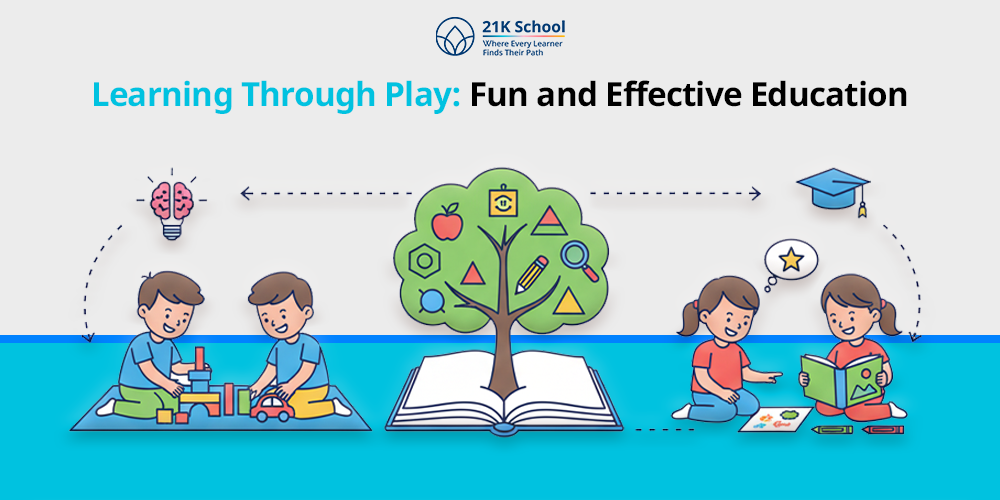
Teacher-centred and student-centred are both different concepts. Teacher-centered is basically a teaching approach in which teachers have all the autonomy, whereas student-centered is a learning approach in which all the autonomy is given to students.
Both teacher-centered and student-centered have their own advantages and disadvantages, as well as both play a crucial role in making education more effective.
In teacher-centered technique, teachers are considered the primary aspects of knowledge sharing, whereas student-centred technique basically engages students and promotes peer-to-peer learning .
Student-centred learning focuses on student engagement and allows them to connect with others, while the teacher-centered method focuses on passive learning where the teacher is the primary source of sharing information.
Contents
- What is Teacher-Centered Learning?
- What is Student-Centered Learning?
- Difference Between Teacher-Centered Learning and Students Centered Learning
- Similarities Between Teachers Centered Learning and Students Centered Learning
- Advantages of Teacher-Centered Learning
- Drawbacks of Teacher-Centered Learning
- Advantages of Student-Centered Learning
- Drawbacks of Student-Centered Learning
- Final Thoughts
What is Teacher-Centered Learning?
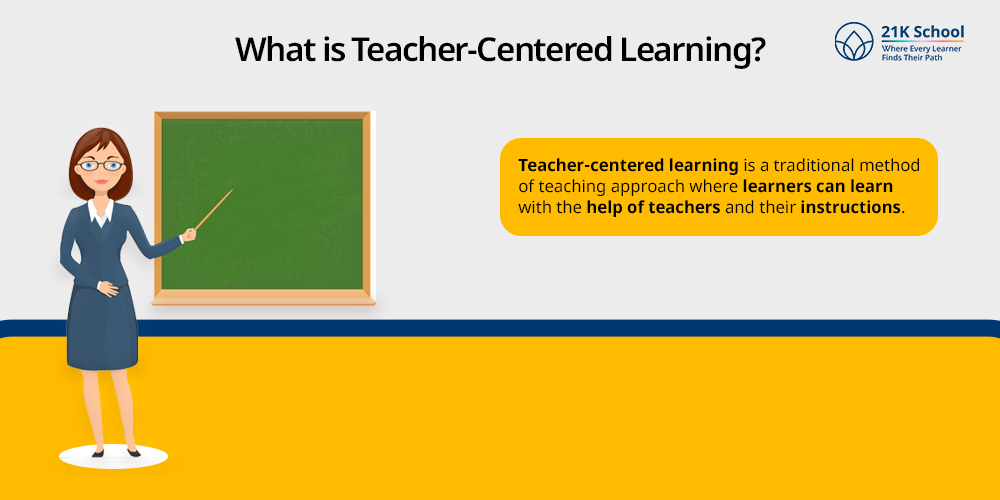
Teacher-centered learning is a traditional method of teaching approach where learners can learn with the help of teachers and their instructions. In teacher-centered learning, teachers are the main and classic source of knowledge.
In this method, teachers present knowledge to learners and focus on passive learning. In teacher-centered learning, teachers encourage students to participate in class activities and enhance their motivation.
However, in teaching centered learning, teachers are the sole representatives due to which it hampers collaborative learning and students find it difficult to maintain teacher-student relationship .
In this method, all the controls were provided to teachers and all the class activities were conducted in the presence of them. This method is helpful in maintaining classroom discipline and creates a positive learning environment.
What is Student-Centered Learning?
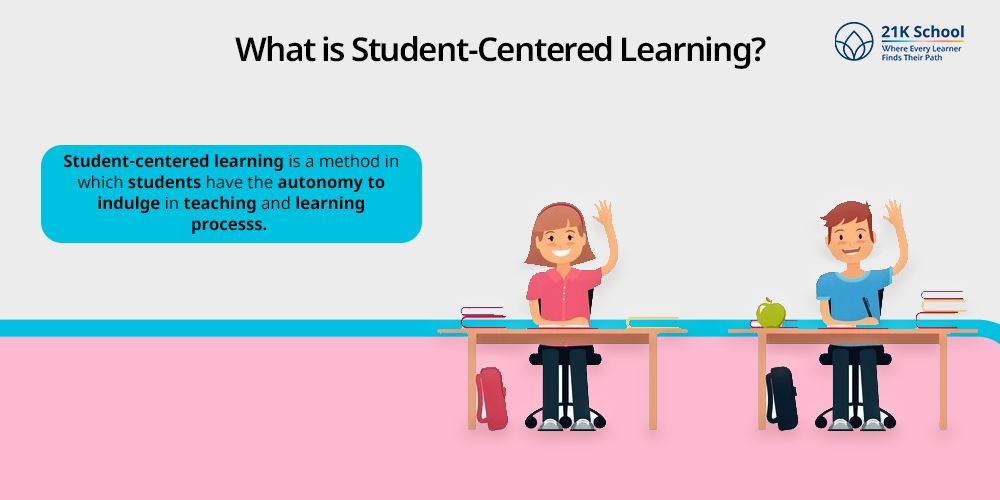
Student-centered learning is a method in which students have the autonomy to indulge in teaching and learning process. In this approach, the focus of instruction was shifted from teachers to students.
Student-centered learning enhances students’ engagement and promotes collaborative learning. This type of method makes students responsible and helps in developing problem-solving skills .
This approach also helps in knowledge sharing and enables students to indulge in lifelong learning as well as make the class more interactive and fun in learning .
The main focus of student centered learning is to develop transferable skills like communication skills , problem-solving and critical thinking skills .
Difference Between Teacher-Centered Learning and Students Centered Learning
Teacher-centered learning and student- centered learning both have different aspects. Each learning aspect has its own advantages and disadvantages.
Teacher-centered learning primarily focuses on teaching students with a fixed approach of teaching methods , whereas student-centered learning gives autonomy to students, where they can learn as per their choice of learning.
Below, you can check the differences between teacher-centered learning and student-centered learning.
| Sr.No. | Aspect | Teacher-Centered Learning | Student Centered Learning |
| 1 | Definition | Teacher-centered learning is a traditional method of teaching approach where learners can learn with the help of teachers and their instructions. | Student centered learning is a method in which students have the autonomy to indulge in teaching and learning process. |
| 2 | Engagement | Teacher-centered learning has less engagement of students, as this makes students bored, which reduces their class engagement. | This method is interactive as students get the opportunity to indulge in the teaching and learning process. This enables students to enhance their class engagement. |
| 3 | Type | Teacher-centered learning is a passive learning approach, where all the autonomy is given to the teacher. | Student-centered learning is active learning where children indulge in class activities as well as the teaching and learning process. |
| 4 | Assessment | In this method, assessments are conducted through tests, formative assessment tools , class activities, etc. | In this approach, assessments are conducted through activities, collaborative projects, self-paced learning, etc. |
| 5 | Examples | Examples of teacher-centered learning are lectures, presentations, class instructions, etc. | Examples of student centered learning are collaborative work, teamwork, project-based work, inquiry-based learning, etc. |
Similarities Between Teachers Centered Learning and Students Centered Learning
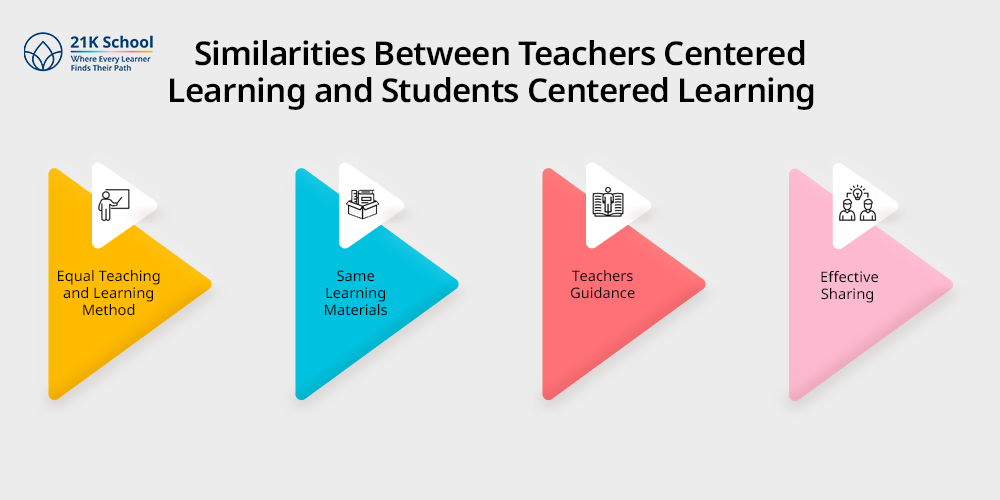
Teacher-centered learning and student- centered learning are both different aspects, however, they have some similarities. Both aspects are essential for teaching and learning experience, which promotes a positive learning environment as well as provides students with hands-on experience.
Both methods help in providing hands-on experience and collaboration skills to children and educators. Below, you can check the similarities of teacher-centered and student-centered learning
1. Equal Teaching and Learning Method
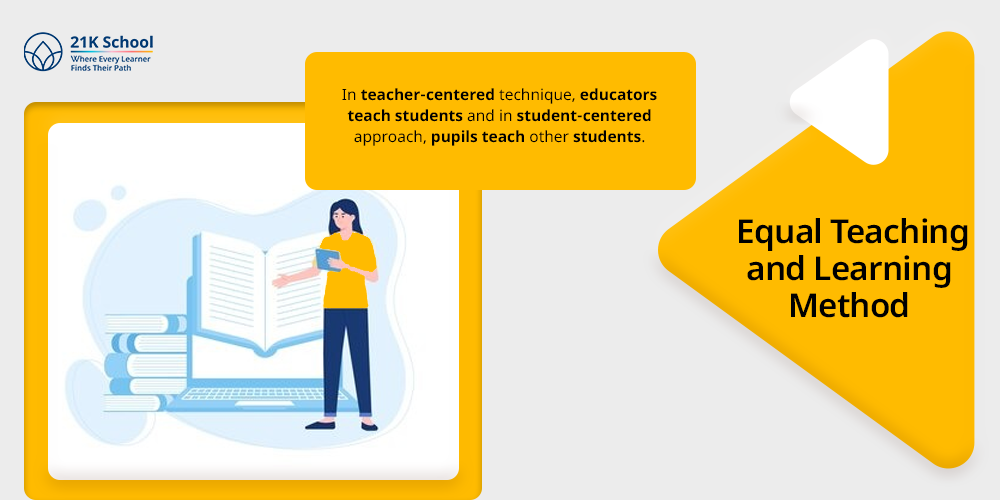
Both teachers centered learning and students centered learning have the same aspects of learning techniques. Both methods use common problem-solving techniques in order to develop new solutions.
In teacher-centered technique, educators teach students and in student-centered approach, pupils teach other students. Both aspects have the same teaching and learning method .
2. Same Learning Materials
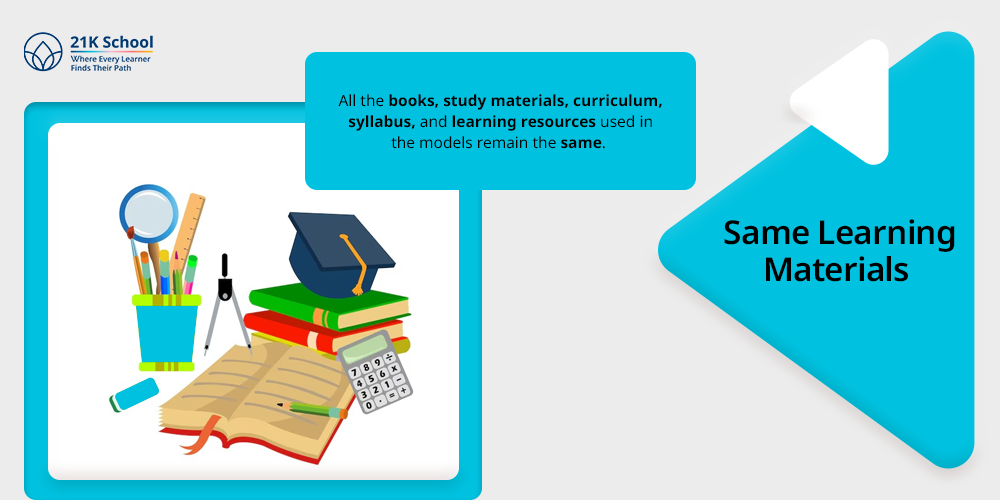
Both the aspects of teacher-centered and student-centered use the same materials and resources for teaching.
All the books, study materials, curriculum, syllabus, and learning resources used in the models remain the same. Only the style of giving instructions varies in both teacher and student-centered aspects.
3. Teachers Guidance
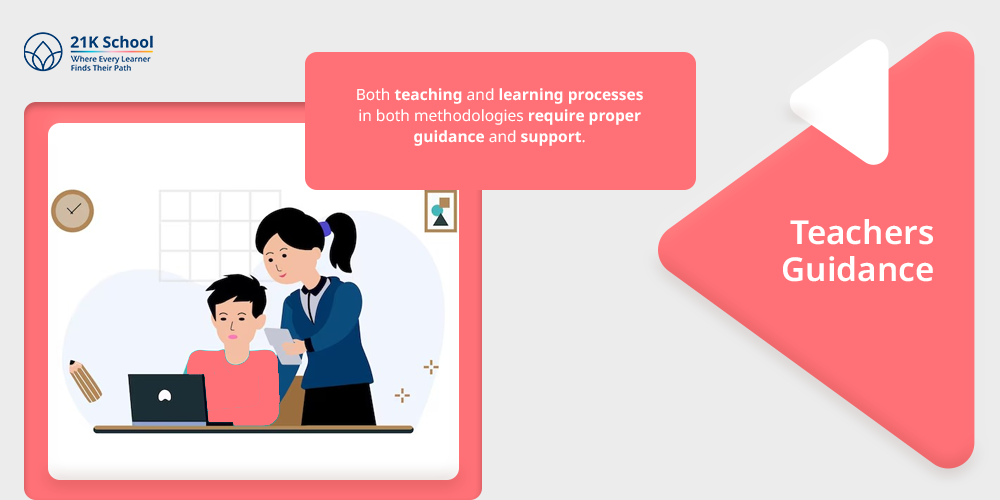
One of the major similarities that is shared by both aspects is teachers’ guidance. In teacher-centered learning and student-centered learning, the requirement of a teacher is a prime factor, as they are the sole representative for sharing information and facilitating students’ knowledge sharing.
Both teaching and learning processes in both methodologies require proper guidance and support.
4. Effective Sharing
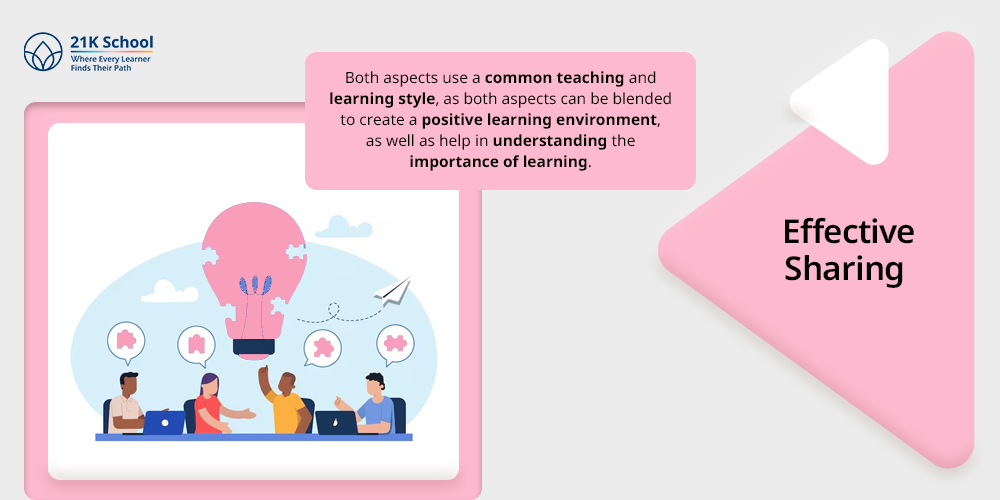
Both the teacher-centered method and student-centered method have effective sharing of knowledge and instructions.
Both aspects use a common teaching and learning style, as both aspects can be blended to create a positive learning environment, as well as help in understanding the importance of learning .
Advantages of Teacher-Centered Learning
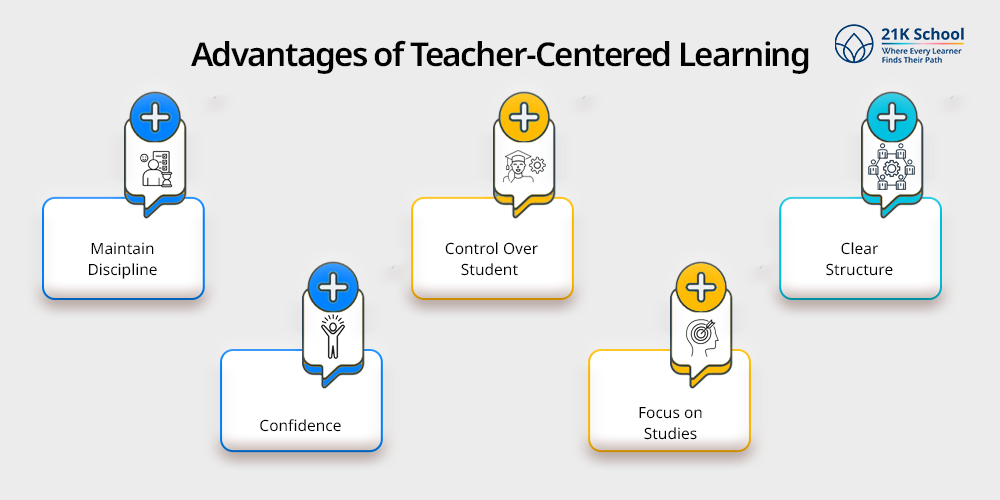
Teacher-centered learning has passive learning in which teachers are the primary source for sharing knowledge and information. A teacher-centered method helps in maintaining classroom discipline and creates an effective study schedule .
Here you can check the advantages of teacher-centered learning mentioned below.
1. Maintain Discipline
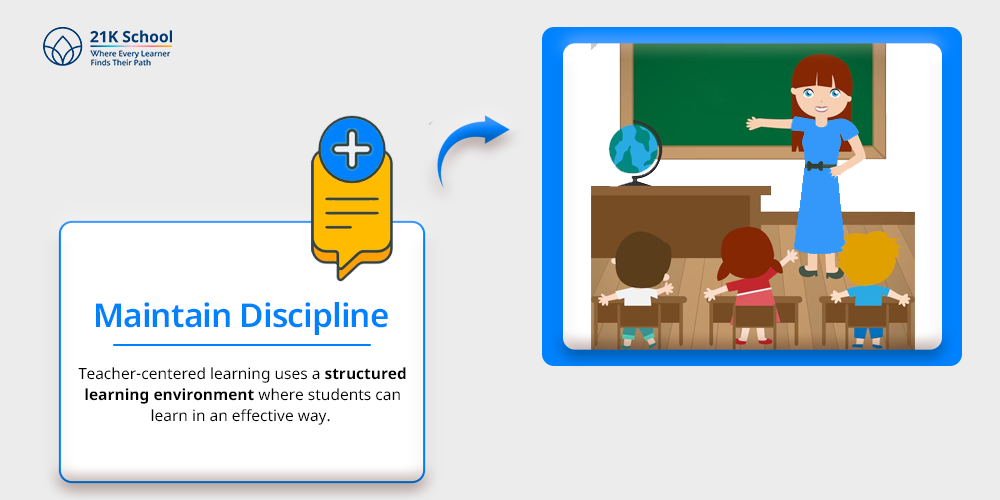
Teacher-centered learning helps in maintaining classroom discipline. Teacher-centered learning uses a structured learning environment where students can learn in an effective way.
Discipline in education allows the class environment to be quieter and reduces distraction, which enables children to study without any conflicts.
2. Control Over Student
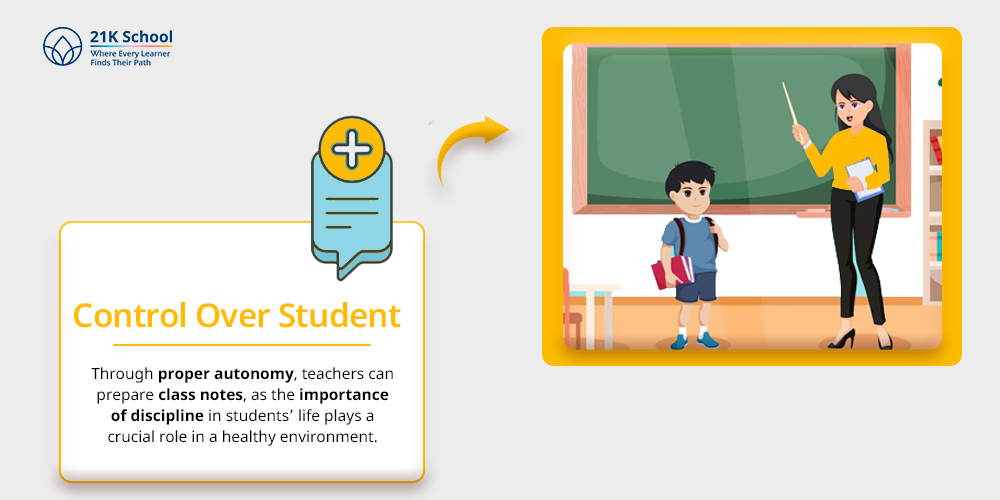
Teacher-centered learning allows educators to have proper control over the students. Through proper autonomy, teachers can prepare class notes, as the importance of discipline in students life plays a crucial role in a healthy environment.
This allows teachers to manage their classes and effectively encourage students to participate in class activities.
3. Clear Structure
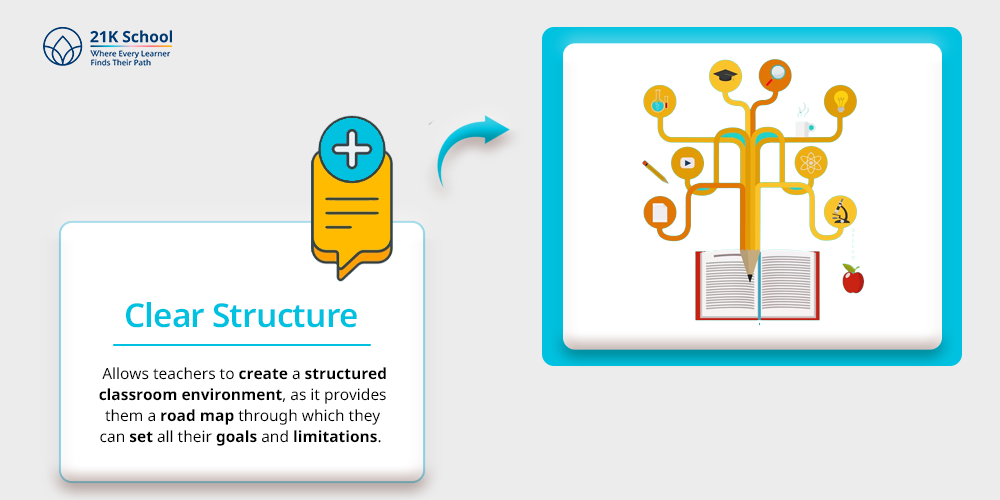
Teacher-centred learning allows teachers to create a structured classroom environment, as it provides them a road map through which they can set all their goals and limitations.
A clear structure helps in making education more impactful and ensures that every student grasps the concepts more easily.
4. Confidence
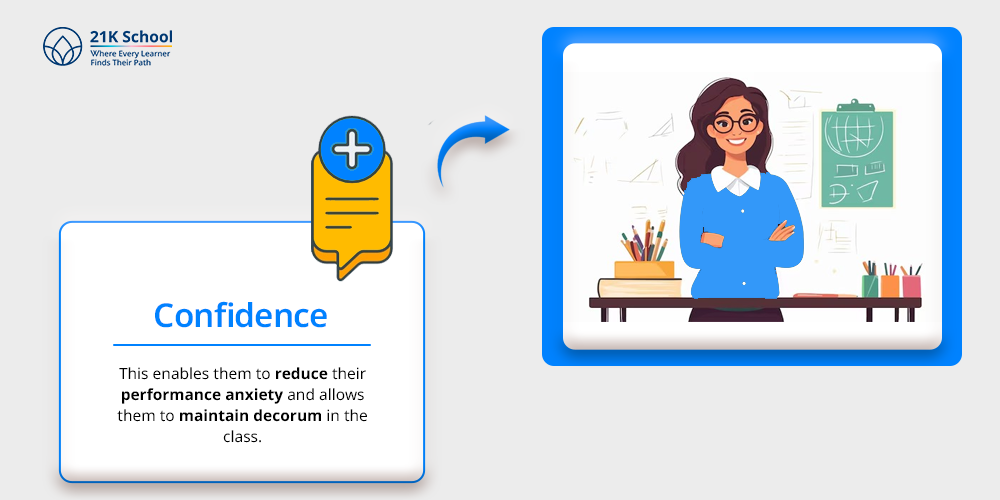
One of the major advantages of teacher-centered learning is that it boosts teachers’ confidence. With confidence, educators can teach large numbers of students and effectively share information.
This enables them to reduce their performance anxiety and allows them to maintain decorum in the class.
5. Focus on Studies
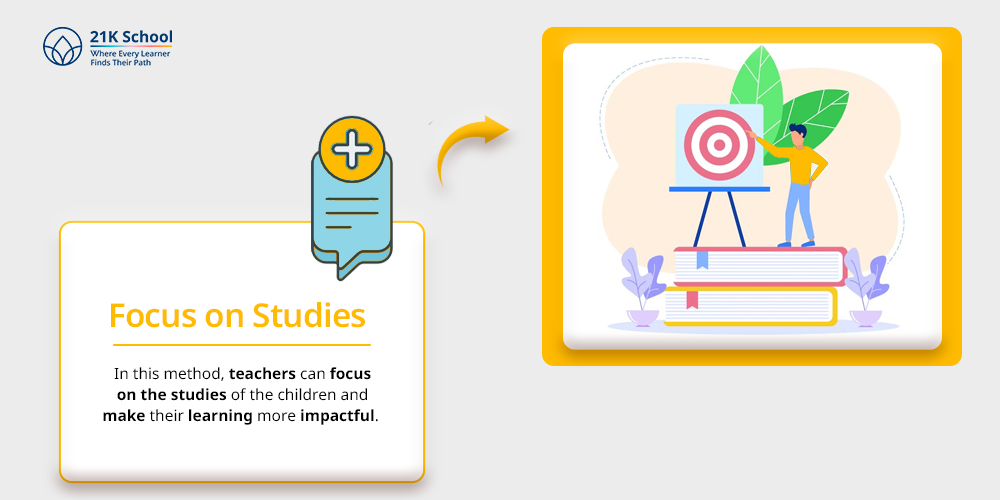
Teacher centered learning allows students to study with concentration and reduce distractions. In this method, teachers can focus on the studies of the children and make their learning more impactful.
As children can be distracted more easily, the teacher-centered method allows them to stay focused.
Drawbacks of Teacher-Centered Learning
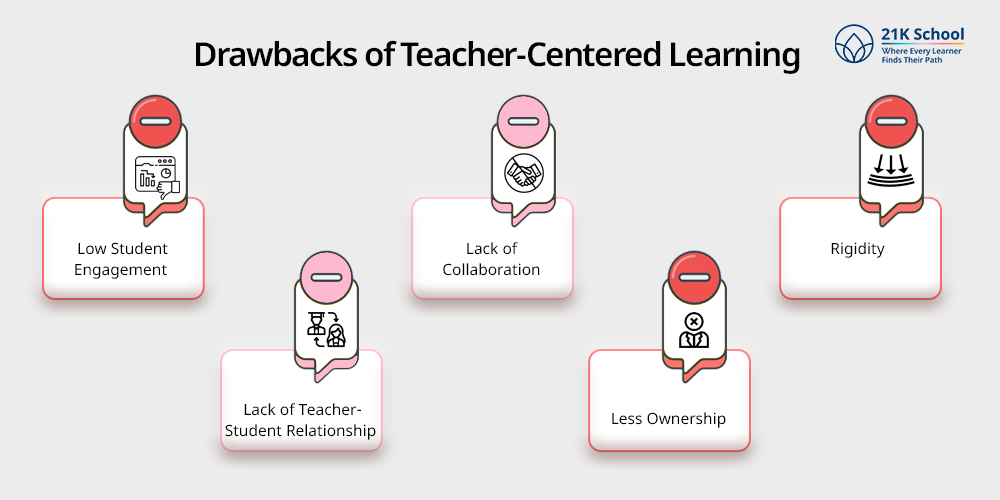
Teacher-centered learning has various benefits, such as providing students with structured education as well as enhancing students’ concentration.
However, with so many benefits, there are various disadvantages to this method. Here you can check the drawbacks of teacher-centered learning mentioned below.
1. Low Student Engagement
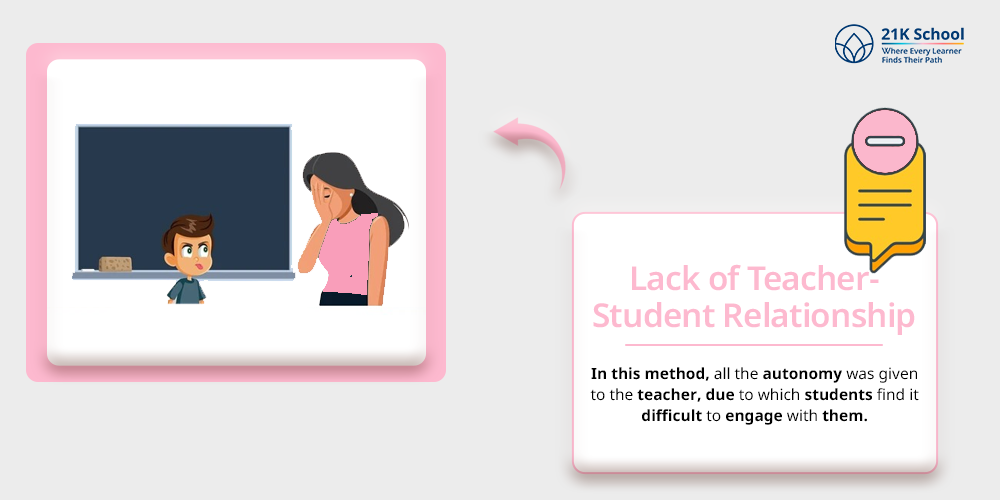
As teacher-centered learning is a passive learning approach, where teachers share information and students listen to them.
This method makes students bored, which reduces their class engagement. Due to low engagement, children may not be able to grasp concepts more effectively.
2. Lack of Collaboration
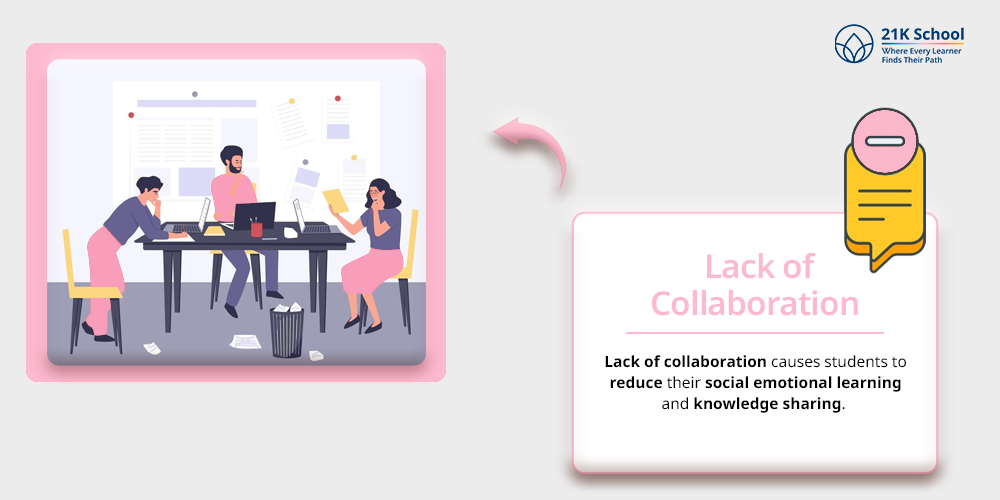
In a teacher-centered method, teachers teach the students, and due to this, it becomes tough to collaborate with peers.
Lack of collaboration causes students to reduce their social emotional learning and knowledge sharing. As this method focuses on passive learning due to this there is a very low chance of including peer collaboration.
3. Rigidity
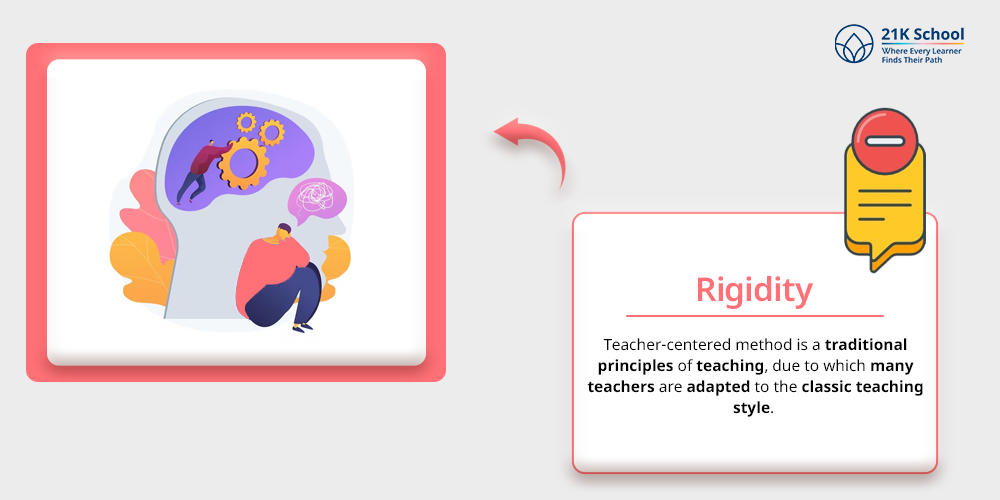
Teacher-centered method is a traditional principles of teaching , due to which many teachers are adapted to the classic teaching style. Changing to a new teaching method becomes tough for them, and they become rigid in the old one.
Even students are also heavily reliant on teachers due to which hinders an independent learning style.
4. Lack of Teacher-Student Relationship
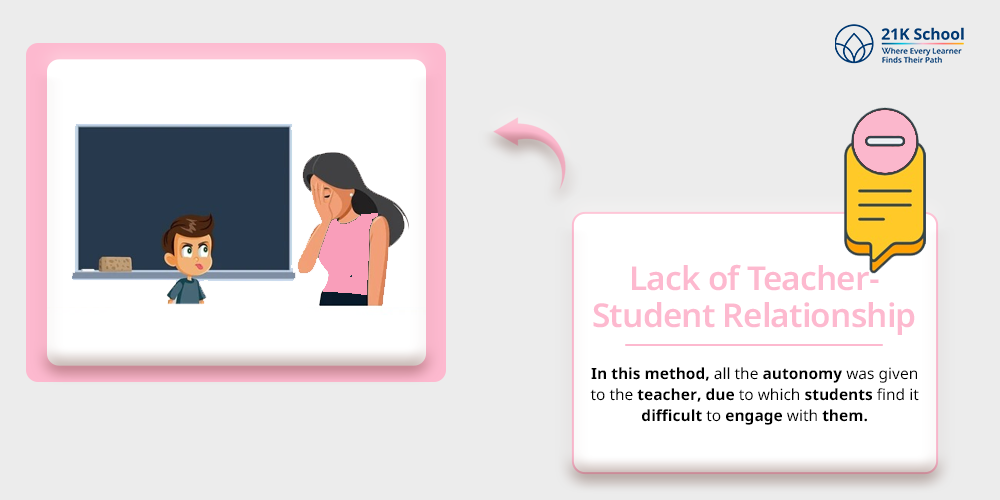
Teacher-student relationships are very essential for a positive outcome; however, due to teacher-centered methods, it becomes tough to make teacher-student relationships.
In this method, all the autonomy was given to the teacher, due to which students find it difficult to engage with them.
5. Less Ownership
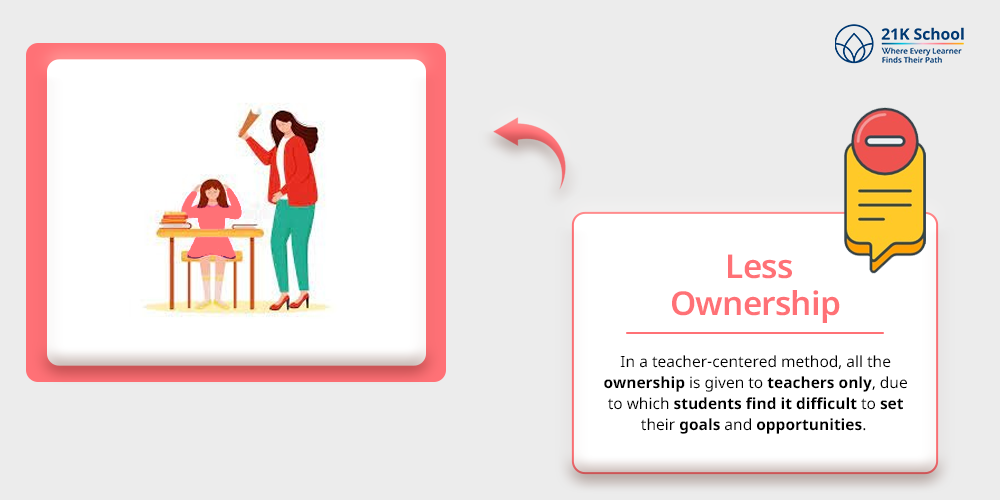
In a teacher-centered method, all the ownership is given to teachers only, due to which students find it difficult to set their goals and opportunities. Due to less ownership in students, they find it difficult to cooperate with others and make learning more interactive.
Advantages of Student-Centered Learning
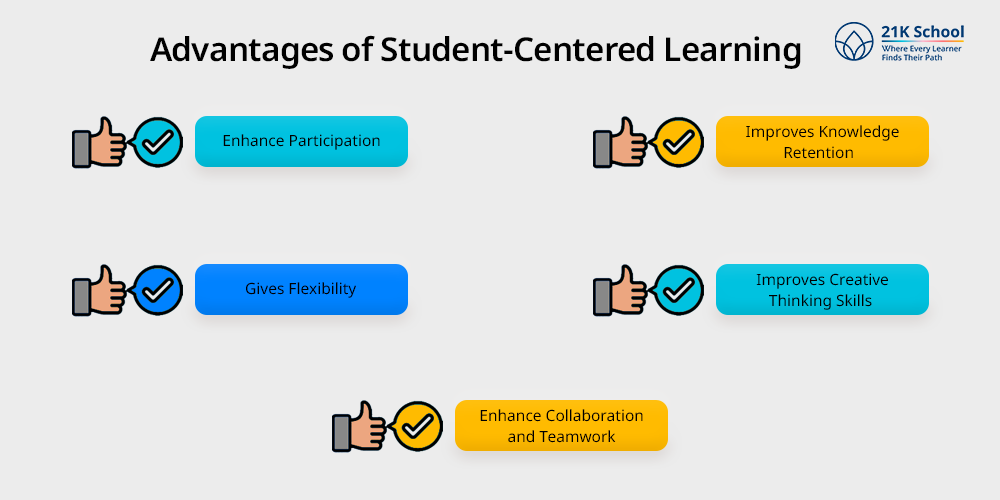
Student-centered learning provides a personalised learning and engaging environment for learning.
Student-centered approach enables them to enhance their problem-solving skills and develop a sense of collaboration and team spirit among them. Below you can check the advantages of student centered learning.
1. Enhance Participation
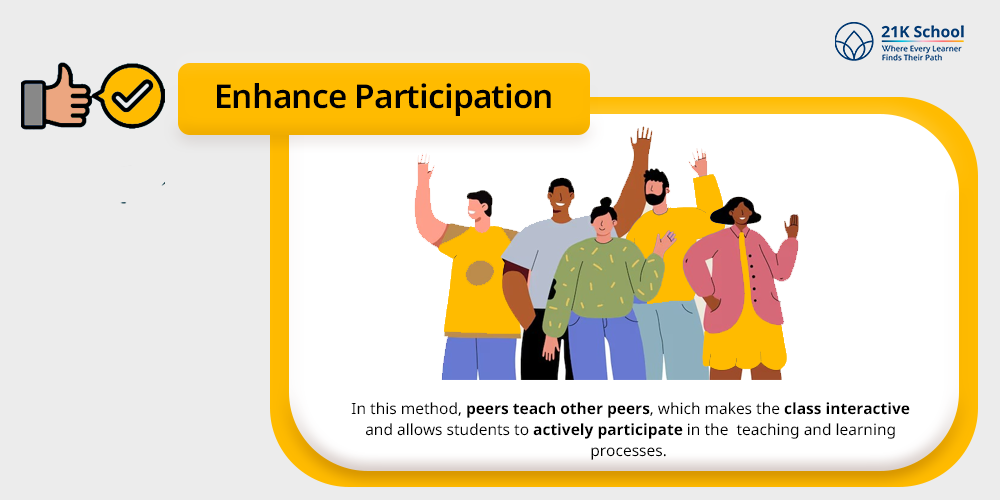
Students-centered learning allows them to enhance class participation. In this method, peers teach other peers, which makes the class interactive and allows students to actively participate in the teaching and learning processes.
This method allows individuals to develop critical thinking skills and promote dynamic education
2. Improves Knowledge Retention
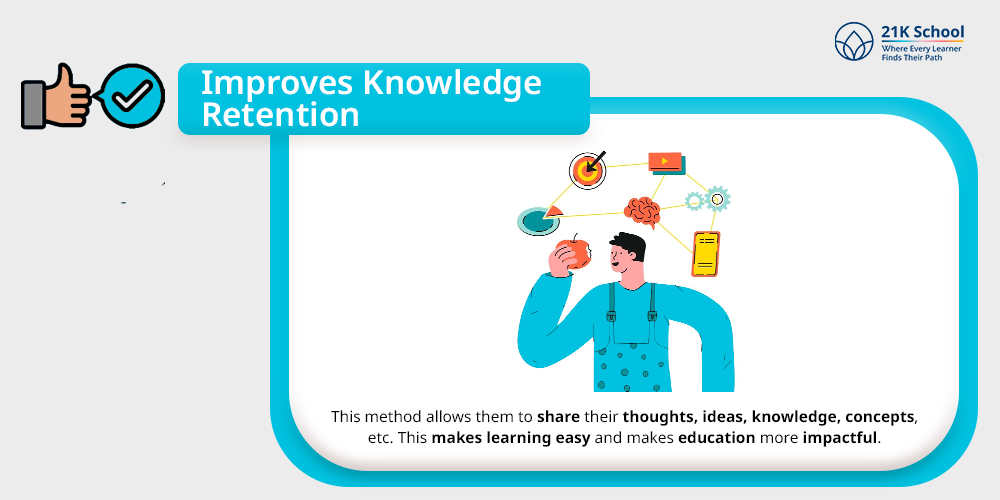
Student centered learning allows students to enhance their knowledge retention through sharing information and connecting with others as well as promoting mindfulness in the classroom .
This method allows them to share their thoughts, ideas, knowledge, concepts, etc. This makes learning easy and makes education more impactful.
3. Gives Flexibility
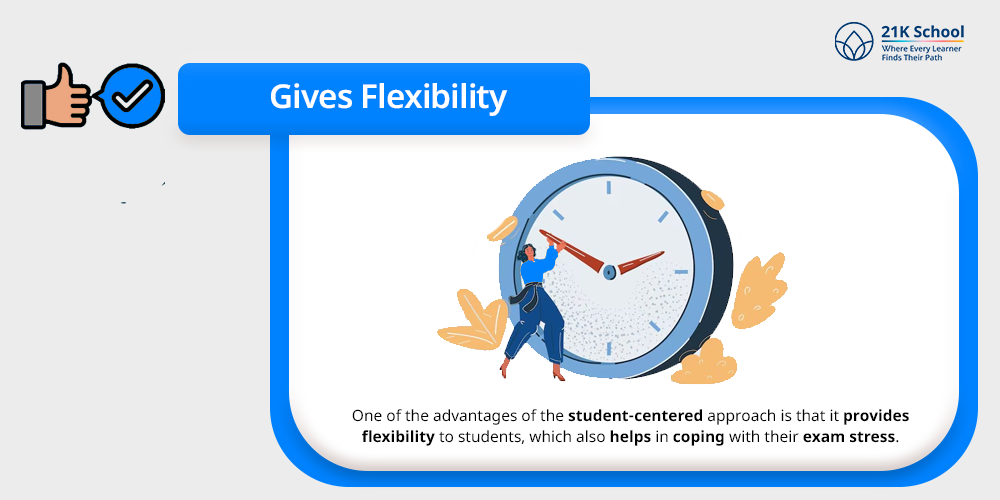
One of the advantages of the student-centered approach is that it provides flexibility to students, which also helps in coping with their exam stress .
Through this method, students can engage in teaching and learning processes, which enables them to enhance their problem-solving skills. Flexibility allows students to learn at their own pace, irrespective of any challenges.
4. Improves Creative Thinking Skills
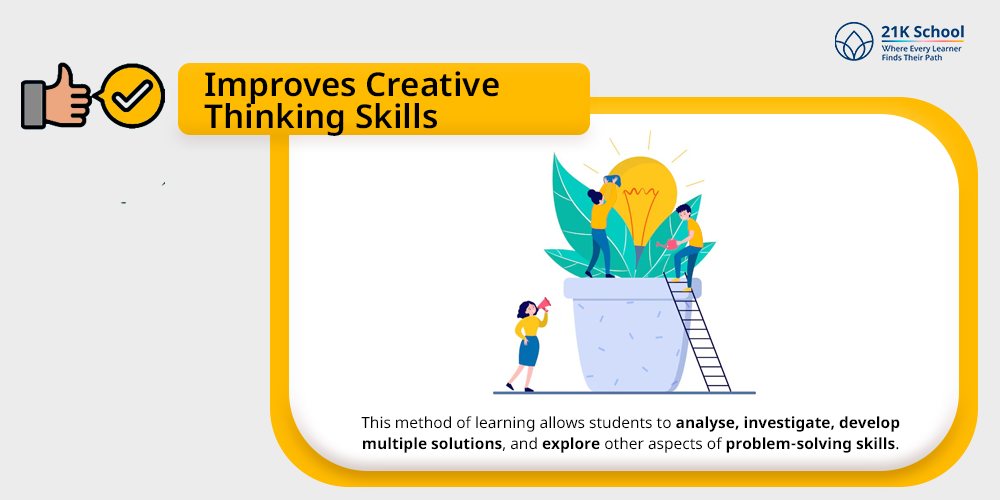
Student-centered learning allows kids to develop creative thinking skills through effective learning experiences.
This method of learning allows students to analyse, investigate, develop multiple solutions, and explore other aspects of problem-solving skills. This allows them to find solutions for difficult problems with creative strategies, thus enhancing creative thinking skills.
5. Enhance Collaboration and Teamwork
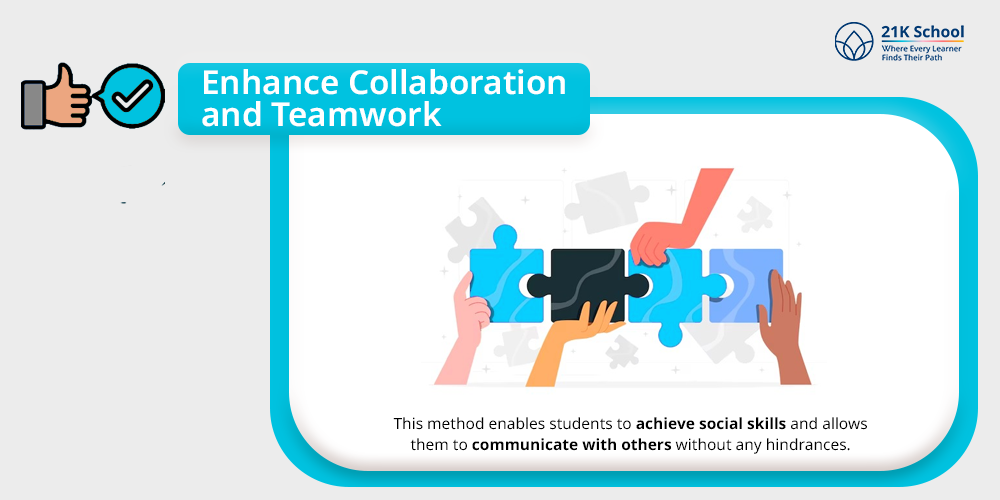
Student-centered learning enhances collaboration among students through peer to peer learning and cooperative learning . This method enables students to achieve social skills and allows them to communicate with others without any hindrances.
Drawbacks of Student-Centered Learning
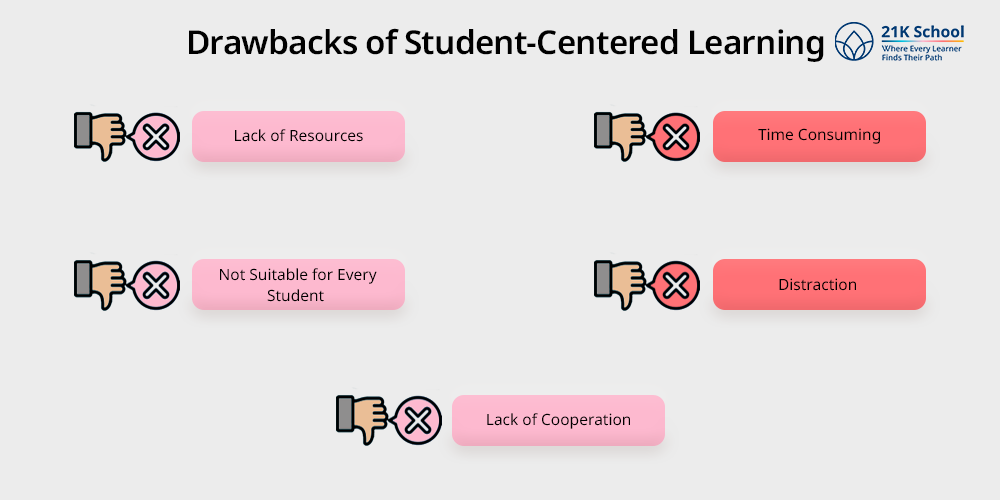
Students-centered learning has lots of benefits as it gives them autonomy to learn and gives them equal learning opportunities.
However, even with so many benefits, student-centered learning has various drawbacks. Here you can check the disadvantages of students-centered learning mentioned below.
1. Lack of Resources
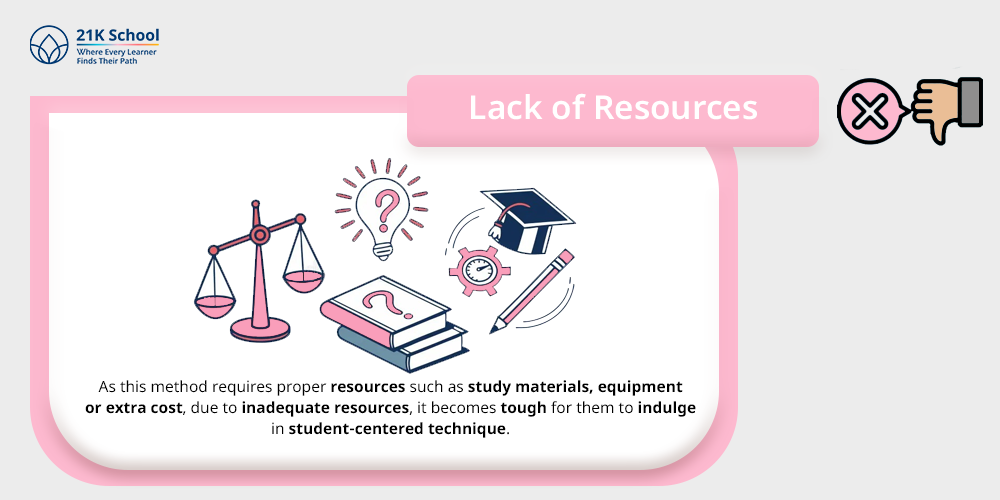
Lack of resources is one of the major reasons that hampers student-centered learning. As this method requires proper resources such as study materials, equipment or extra cost, due to inadequate resources, it becomes tough for them to indulge in student-centered technique.
2. Time Consuming
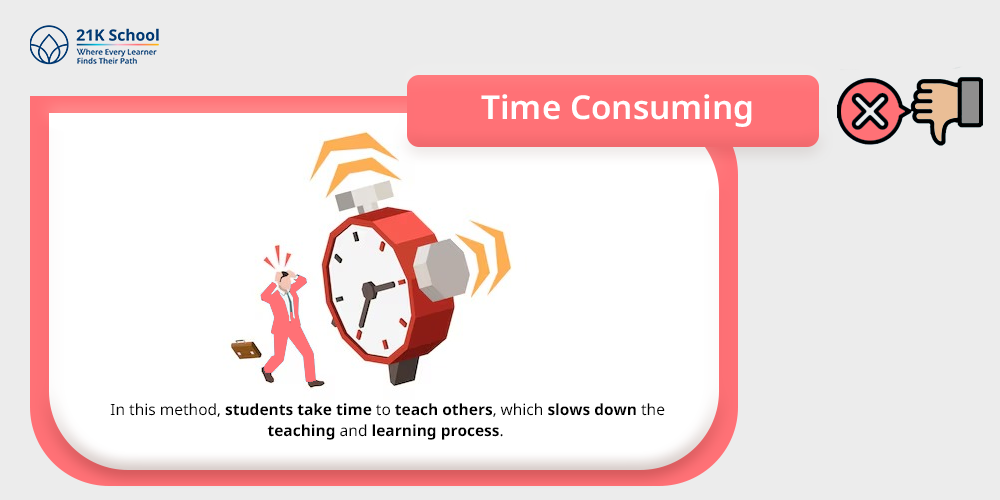
Student-centered learning is more time-consuming as compared to traditional aspects of education. In this method, students take time to teach others, which slows down the teaching and learning process.
Due to the slow pace in the learning process, it becomes tough to complete the syllabus on time.
3. Not Suitable for Every Student
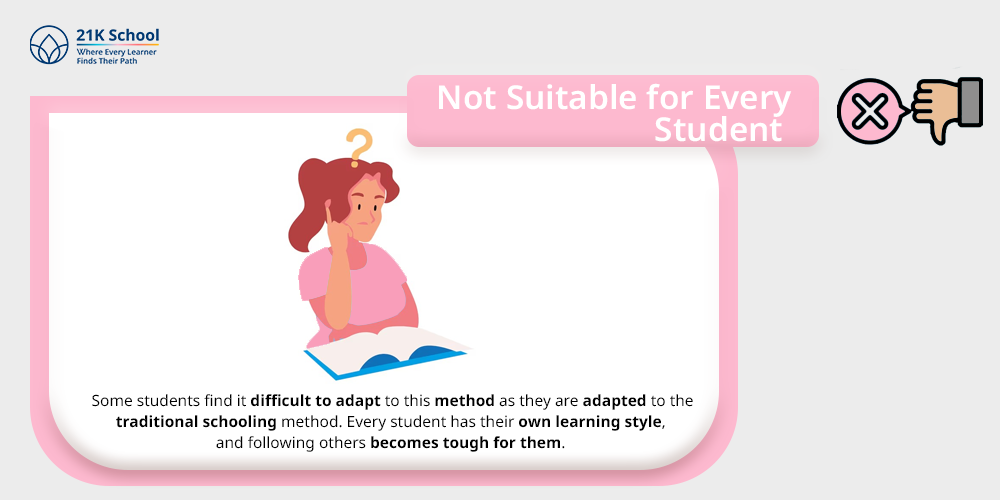
The Student-centered method is basically a collaborative learning environment, where every student shares their knowledge with each other and causes differentiated learning .
However, some students find it difficult to adapt to this method as they are adapted to the traditional schooling method. Every student has their own learning style, and following others becomes tough for them.
4. Distraction
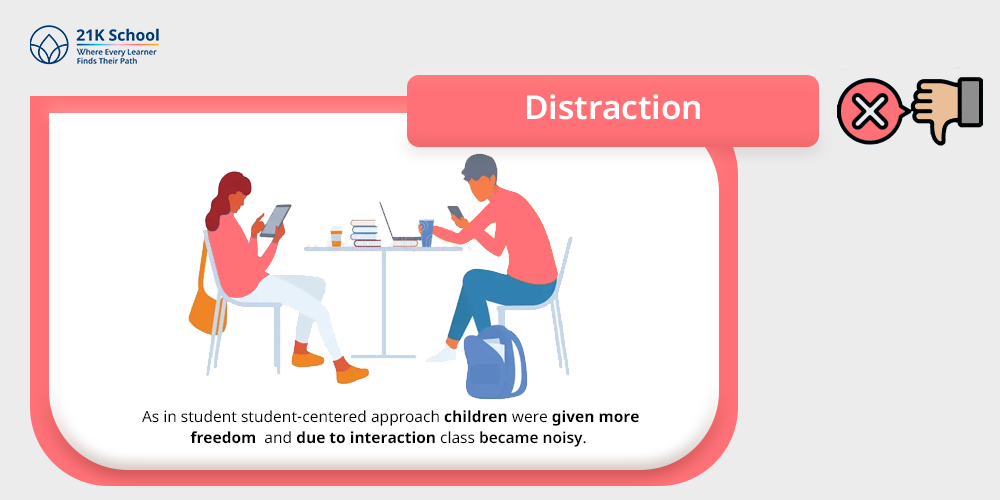
Distraction is another major problem that hinders student-centered learning. As in student student-centered approach children were given more freedom ,and due to interaction class became noisy.
Due to distraction, students find it difficult to maintain concentration in studies and this also hampers classroom discipline. It also hampers students mental health .
5. Lack of Cooperation
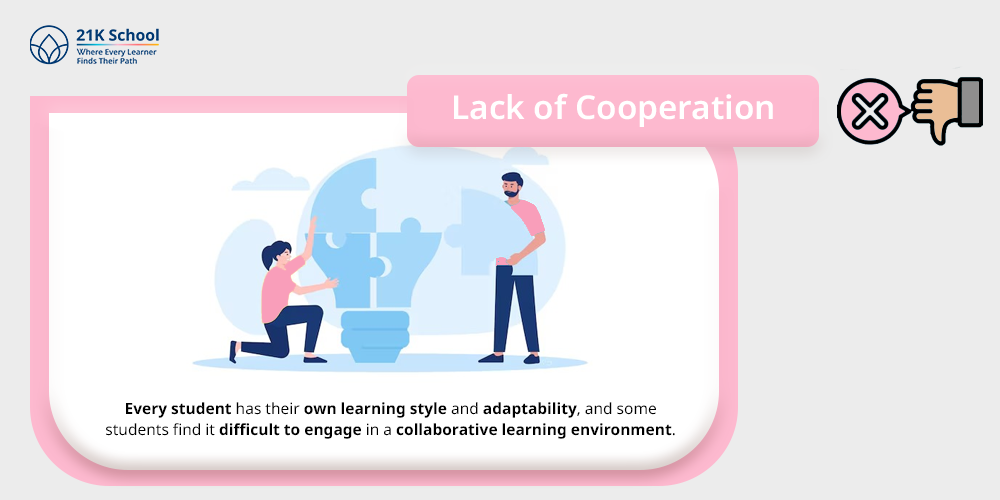
Lack of cooperation is another factor that hinders the potential outcomes of a student centered approach. Every student has their own learning style and adaptability, and some students find it difficult to engage in a collaborative learning environment.
Final Thoughts
The educational experience can be greatly impacted by the unique benefits and drawbacks of both teacher-centered and student-centered learning approaches.
In order to keep the classroom in order and guarantee that students receive consistent instruction, teacher-centered learning is effective because it offers structure, discipline and clear guidance.
On the other hand, it might result in low student engagement and little teamwork. In contrast, student-centered learning empowers students to take charge of their education by encouraging critical thinking , active engagement, and teamwork.
However, it can be time-consuming and resource-intensive, and it might not be appropriate for all learning styles.
In the end, the best strategy for developing a dynamic and inclusive learning environment that satisfies the various needs of every student may be a well-rounded strategy that combines aspects of both approaches.

